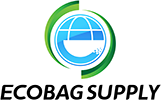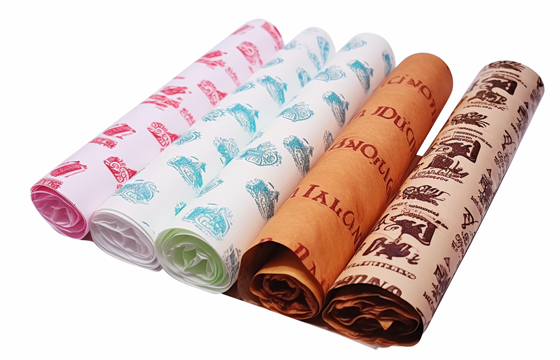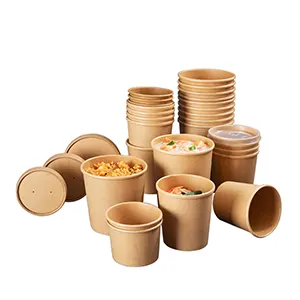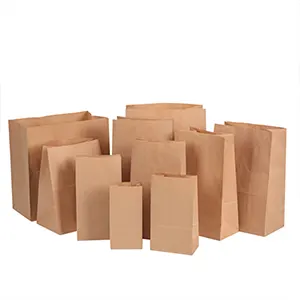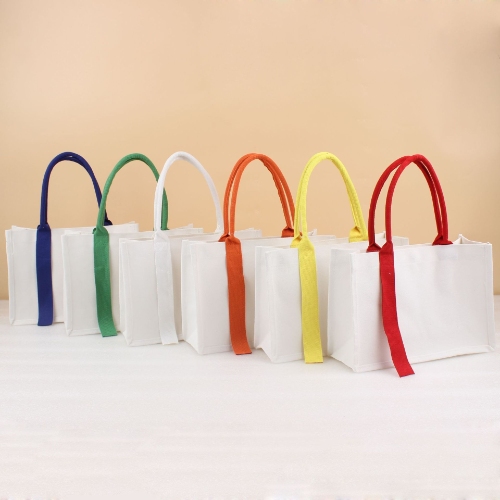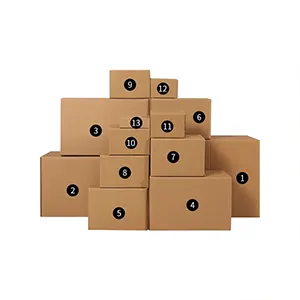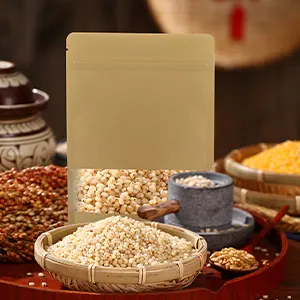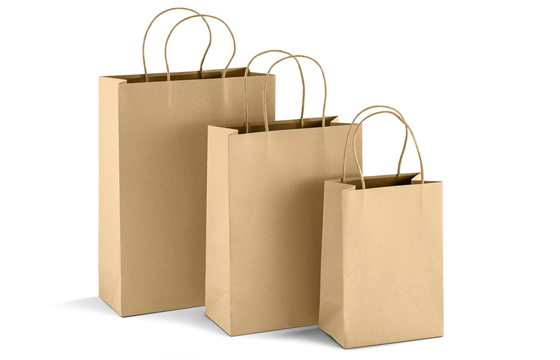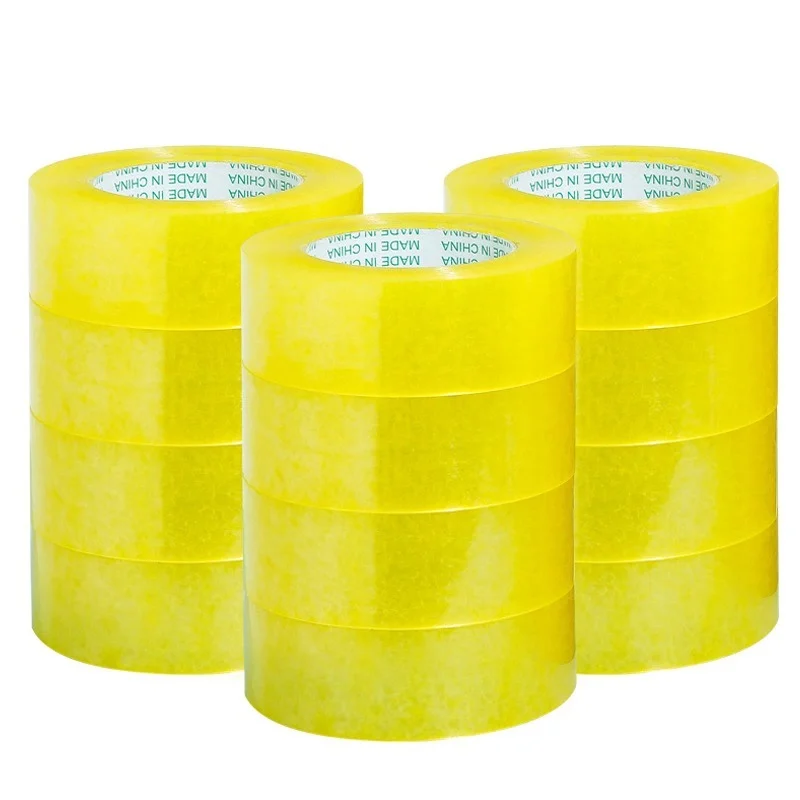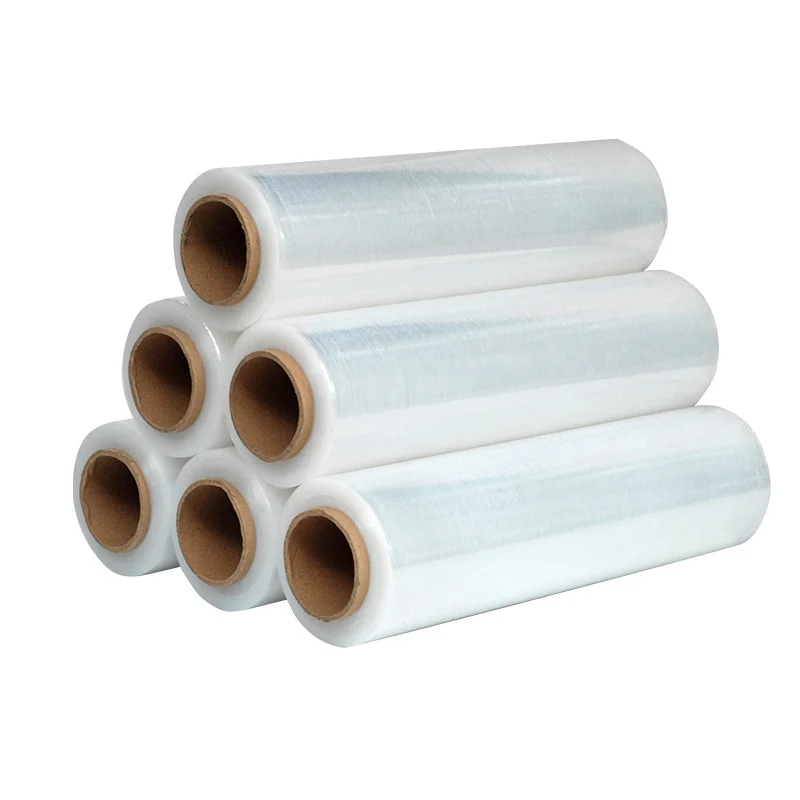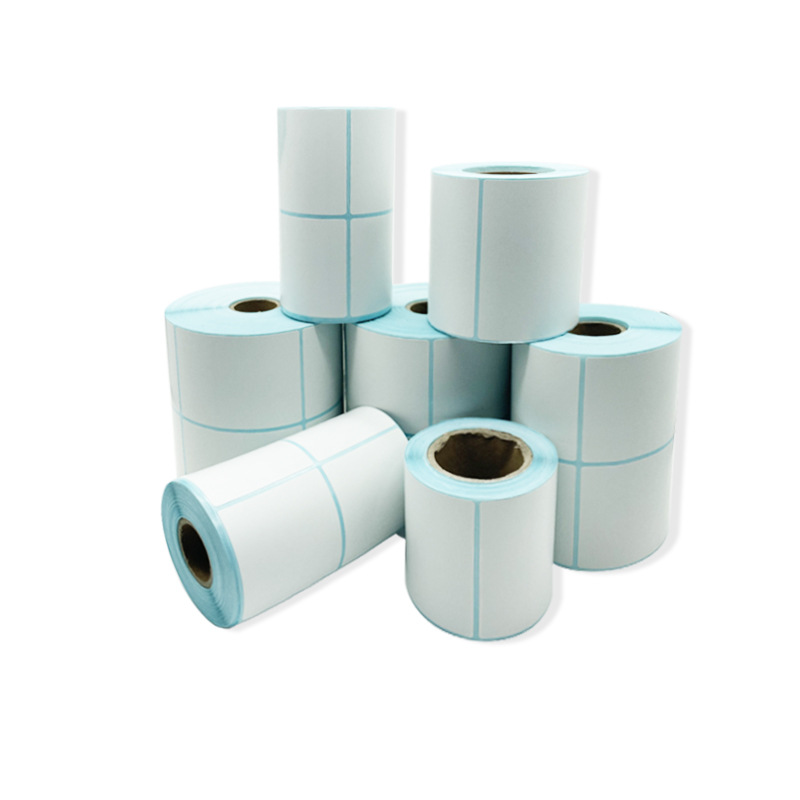Market Insights on Paper Packaging Bags | Trends & Growth
Paper packaging bags have become an essential part of the global packaging industry as businesses and consumers shift towards sustainable solutions. The demand for these bags has grown significantly due to increasing environmental awareness, government regulations on plastic bans, and the rise of eco-friendly consumer preferences. As more industries adopt paper packaging, the market continues to evolve with new trends, innovations, and challenges.

The global paper packaging bags market is expected to grow steadily over the next decade. Businesses across various industries, including food and beverage, retail, and e-commerce, are replacing plastic packaging with paper-based alternatives. Governments are enforcing strict policies on single-use plastics, making paper packaging a preferred choice for companies looking to meet sustainability goals.
This article explores the growth of the paper packaging bags market, industry trends, challenges, and future opportunities. It provides insights into why businesses are investing in paper packaging and how the market is likely to develop in the coming years.
Growth of the Paper Packaging Bags Market
The paper packaging bags market has experienced strong growth due to increasing consumer awareness about the harmful effects of plastic waste. Many consumers now prefer products that use environmentally friendly packaging, pushing businesses to transition from plastic to paper.
One of the key reasons for this growth is government regulations. Many countries have implemented laws banning or limiting the use of plastic bags. Governments in the United States, Canada, and the European Union have introduced policies that require businesses to use biodegradable or recyclable packaging materials. This has forced industries such as retail, fashion, and food services to adopt paper packaging bags.
The rise of e-commerce has also contributed to the growth of the market. Online shopping has increased significantly over the past decade, leading to a higher demand for packaging solutions. Many e-commerce businesses now use paper bags and mailers for shipping instead of plastic, making their packaging more sustainable.
Another factor driving growth is the advancement in paper bag manufacturing technology. Companies are investing in research and development to create stronger, more durable, and moisture-resistant paper bags. These innovations help businesses replace plastic packaging without compromising quality or functionality.
As sustainability continues to be a top priority for consumers and businesses alike, the market for paper packaging bags is expected to expand further in the coming years.
Industry Trends in Paper Packaging Bags
The paper packaging bags market is constantly evolving, with new trends shaping how businesses use and design their packaging. Sustainability, innovation, and branding are some of the biggest trends influencing the industry today.
One of the most significant trends is the use of biodegradable and compostable materials. Many paper bags are now made from recycled paper or biodegradable materials that break down naturally, reducing environmental impact. This shift aligns with consumer demand for packaging that is both functional and sustainable.
Customization and branding are also becoming increasingly popular. Businesses recognize that packaging is an essential part of their brand identity. Custom-printed paper bags with company logos, colors, and messages help businesses create a strong visual presence. Many luxury brands, fashion retailers, and boutique stores use high-quality printed paper bags to enhance their brand image while maintaining sustainability.
Innovations in material strength and design are also shaping the industry. Some companies are developing water-resistant and grease-proof paper bags, making them more suitable for food packaging. Others are working on reusable paper bags that can withstand multiple uses, further reducing waste.
Digital printing technology has improved the way businesses design and produce paper packaging. High-quality, full-color printing is now available on paper bags, allowing brands to create visually appealing packaging without harming the environment. Digital printing also reduces waste compared to traditional printing methods, making it a more sustainable choice.
Another growing trend is the focus on ethical sourcing. Businesses are looking for suppliers that use responsibly sourced materials and follow environmentally friendly production processes. Many companies prefer paper bags that carry certifications such as the Forest Stewardship Council (FSC) label, which ensures that the paper comes from sustainably managed forests.
As consumers continue to seek sustainable packaging options, these trends will play a major role in shaping the future of the paper packaging bags market.
Challenges in the Paper Packaging Bags Market
Despite its growth and popularity, the paper packaging bags market faces several challenges that businesses must address. These challenges include high production costs, raw material shortages, and recycling limitations.
One of the main challenges is the cost of production. Paper packaging bags are often more expensive to produce than plastic bags. The cost of raw materials, labor, and manufacturing processes can make it difficult for small businesses to afford large-scale production of paper bags. Although demand is increasing, many companies struggle to balance sustainability with affordability.
Raw material shortages are another issue facing the industry. The demand for paper packaging has increased rapidly, leading to supply chain disruptions and rising costs of wood pulp and recycled paper. This can affect the availability and pricing of paper bags, making it difficult for businesses to maintain consistent supply.
Recycling and waste management also pose challenges. While paper bags are biodegradable and recyclable, not all facilities can efficiently process them. Some paper bags contain coatings, inks, or adhesives that make recycling more complicated. Businesses and governments must invest in better recycling infrastructure to ensure that paper packaging is properly processed and reused.
Durability is another concern for businesses that use paper packaging. While advancements in technology have improved the strength of paper bags, some industries still find them less durable than plastic alternatives. For example, paper bags may not be as resistant to moisture or heavy loads, making them less suitable for some products.
Despite these challenges, companies and researchers are working on solutions to improve the efficiency, affordability, and durability of paper packaging bags. As the industry continues to evolve, new innovations and policies will help address these issues.
Future of the Paper Packaging Bags Market
The future of the paper packaging bags market looks promising, with continued growth expected in the coming years. Businesses are increasingly adopting sustainable packaging solutions, and governments are continuing to enforce regulations that support environmentally friendly practices.
One of the key developments in the future of paper packaging is the rise of smart packaging technology. Some companies are integrating QR codes, RFID tags, and digital labels into paper bags to provide consumers with information about the product, sustainability efforts, and recycling instructions. This innovation helps brands engage with customers while promoting responsible packaging disposal.
Advancements in material science will also drive the industry forward. Researchers are developing stronger, lighter, and more durable paper bags that can replace plastic in even more applications. Some companies are experimenting with plant-based coatings that make paper bags water-resistant and grease-proof without harming the environment.
Another trend shaping the future of paper packaging is the circular economy. Many businesses are adopting a closed-loop system where used paper bags are collected, recycled, and turned into new packaging materials. This reduces waste and creates a more sustainable supply chain.
The expansion of online shopping will also contribute to the demand for paper packaging. E-commerce companies are investing in sustainable packaging options, including paper-based shipping bags and protective packaging. As online retail continues to grow, the need for eco-friendly shipping solutions will drive further innovation in the industry.
Consumer behavior will also influence the future of paper packaging. As more people prioritize sustainability, businesses that offer environmentally friendly packaging will gain a competitive advantage. Brands that align with sustainability goals and adopt eco-friendly packaging solutions will attract more customers and strengthen their market presence.
The Impact of E-Commerce on the Paper Packaging Bags Market
E-commerce has seen rapid growth in recent years, and with that, the demand for sustainable packaging solutions has increased. Online retailers are shifting away from plastic packaging to more eco-friendly options such as paper mailer bags, padded paper envelopes, and recyclable shipping boxes. This transition is driven by consumer awareness, regulatory policies, and the need for brands to build a greener reputation.
One of the biggest reasons e-commerce companies are adopting paper packaging bags is the push for sustainability by customers. More shoppers are demanding environmentally friendly packaging, and businesses that prioritize sustainability gain a competitive advantage. Many large e-commerce platforms, including Amazon and Shopify, are encouraging sellers to use eco-friendly packaging, and some even offer incentives for businesses that do so.
Another major reason is that governments are enforcing stricter packaging regulations, particularly regarding plastic waste. Some countries require e-commerce companies to use recyclable or biodegradable materials, pushing businesses to source paper-based packaging solutions. As a result, there is growing demand for kraft paper bags, recycled paper mailers, and compostable packaging.
However, challenges exist in using paper packaging for e-commerce. Durability is a concern, as paper may not offer the same protection as plastic for delicate or high-value items. To address this, companies are investing in reinforced paper packaging with added layers for strength and better cushioning. The development of waterproof paper coatings also helps improve the resilience of paper packaging bags.
The future of e-commerce packaging will continue to focus on sustainability. More innovations will emerge to ensure that paper-based packaging is durable, cost-effective, and eco-friendly. Businesses that adapt to these changes early will benefit from higher customer trust and reduced environmental impact.
The Role of Branding in Paper Packaging Bags
In today’s competitive market, packaging is not just about protecting products; it is also a key branding tool. Businesses use custom paper packaging bags to reinforce their brand identity, improve customer experience, and enhance their market presence. Customization and branding have become essential elements in the shift toward sustainable packaging.
Branded paper bags allow companies to showcase their logo, colors, and message while also promoting an eco-friendly image. Many retailers, especially in the fashion and luxury industries, use high-quality printed paper bags to create a sense of exclusivity and prestige. A well-designed bag makes an impression on customers, making them more likely to reuse it, which extends brand visibility beyond the initial purchase.
Sustainability is now part of branding strategies for many companies. Businesses highlight their commitment to eco-friendly practices by using FSC-certified paper, biodegradable inks, and recyclable packaging. This transparency builds trust with customers who prefer brands that actively contribute to environmental conservation.
A major advantage of branded paper packaging bags is their ability to act as mobile advertisements. When customers carry these bags in public places, they promote the brand to others, increasing exposure and recognition. Companies that focus on eye-catching, sustainable designs can gain a strong competitive advantage.
With the demand for sustainable packaging rising, businesses that invest in branded paper bags will benefit from improved customer loyalty, stronger brand positioning, and increased visibility in the market.
Innovations in Paper Packaging Bag Technology
Advancements in packaging technology are shaping the future of paper packaging bags. Manufacturers are developing stronger, more durable, and eco-friendly alternatives to meet growing industry demands. Innovations in materials, coatings, and production methods are making paper packaging more practical and sustainable.
One major innovation is the use of water-resistant and grease-proof coatings on paper bags. Traditionally, paper was not ideal for packaging food and liquids due to its tendency to absorb moisture. However, new biodegradable coatings made from plant-based materials now allow paper bags to be used for items like coffee cups, takeout containers, and frozen foods.
Another key development is smart packaging technology. Some paper packaging now includes QR codes, NFC tags, or augmented reality features that provide consumers with product details, recycling instructions, and brand promotions. This interactive technology improves customer engagement and encourages responsible disposal of packaging materials.
The introduction of biodegradable adhesives and natural inks is also making paper bags more eco-friendly. Traditional printing inks contain chemicals that can be harmful to the environment, but newer soy-based and water-based inks offer a sustainable alternative. Similarly, biodegradable adhesives ensure that paper bags can be easily recycled or composted without leaving behind harmful residues.
Manufacturers are also improving the strength and durability of paper packaging by using multi-layered kraft paper and reinforced handles. This allows paper bags to hold heavier items without tearing, making them a suitable replacement for plastic bags in grocery stores, fashion retail, and e-commerce.
As technology continues to evolve, the paper packaging industry will see more breakthroughs that improve functionality, sustainability, and cost-effectiveness. Businesses that adopt these innovations will be able to offer high-quality, eco-friendly packaging while staying ahead in the competitive market.
Conclusion
The market for paper packaging bags is growing rapidly as businesses and consumers prioritize sustainability. Driven by government regulations, consumer demand, and industry innovation, paper packaging has become an essential part of the modern packaging industry.
Despite challenges such as high production costs, raw material shortages, and recycling limitations, the industry is continuously evolving to meet market demands. Innovations in biodegradable materials, customization, and smart packaging technology will play a key role in shaping the future of paper packaging.
As more businesses switch to sustainable packaging, the paper packaging bags market is expected to expand further, creating new opportunities for manufacturers, retailers, and suppliers. Companies that invest in eco-friendly packaging today will benefit from long-term growth and a positive brand reputation in the years to come.
JERL has been working hard on the road of custom packaging. Next time when you feel the need to impress someone with your brand, think of JERL Packaging!
